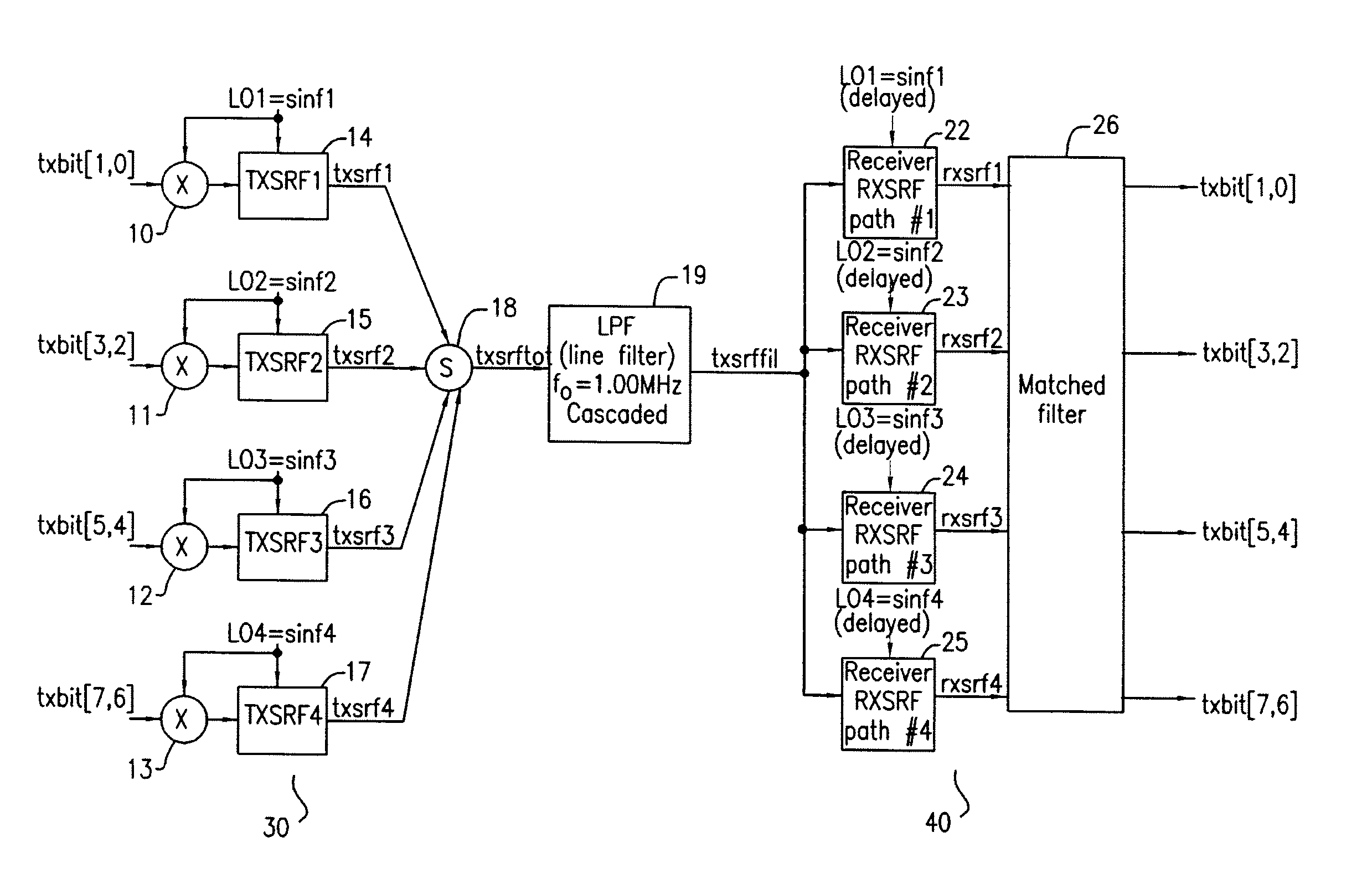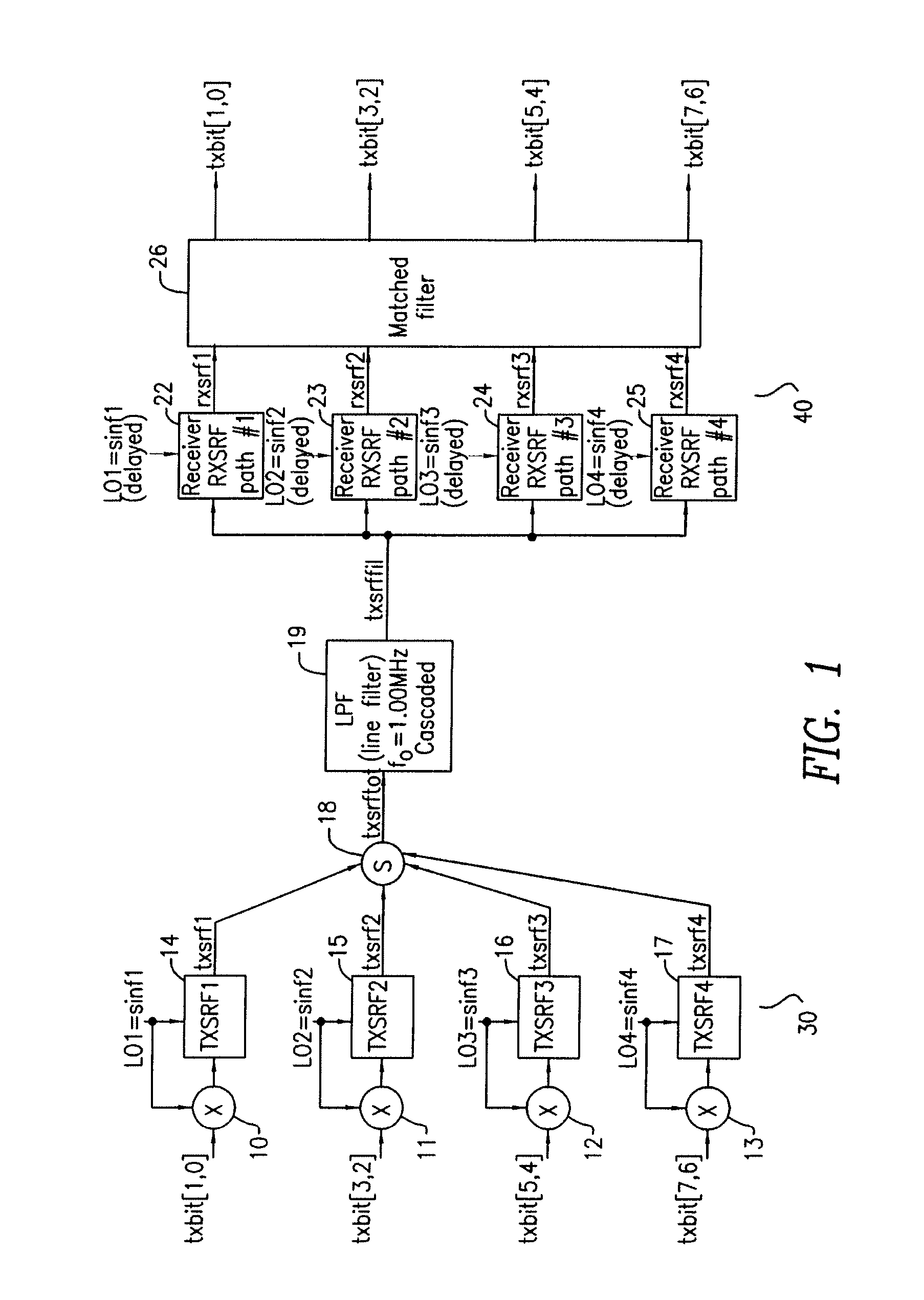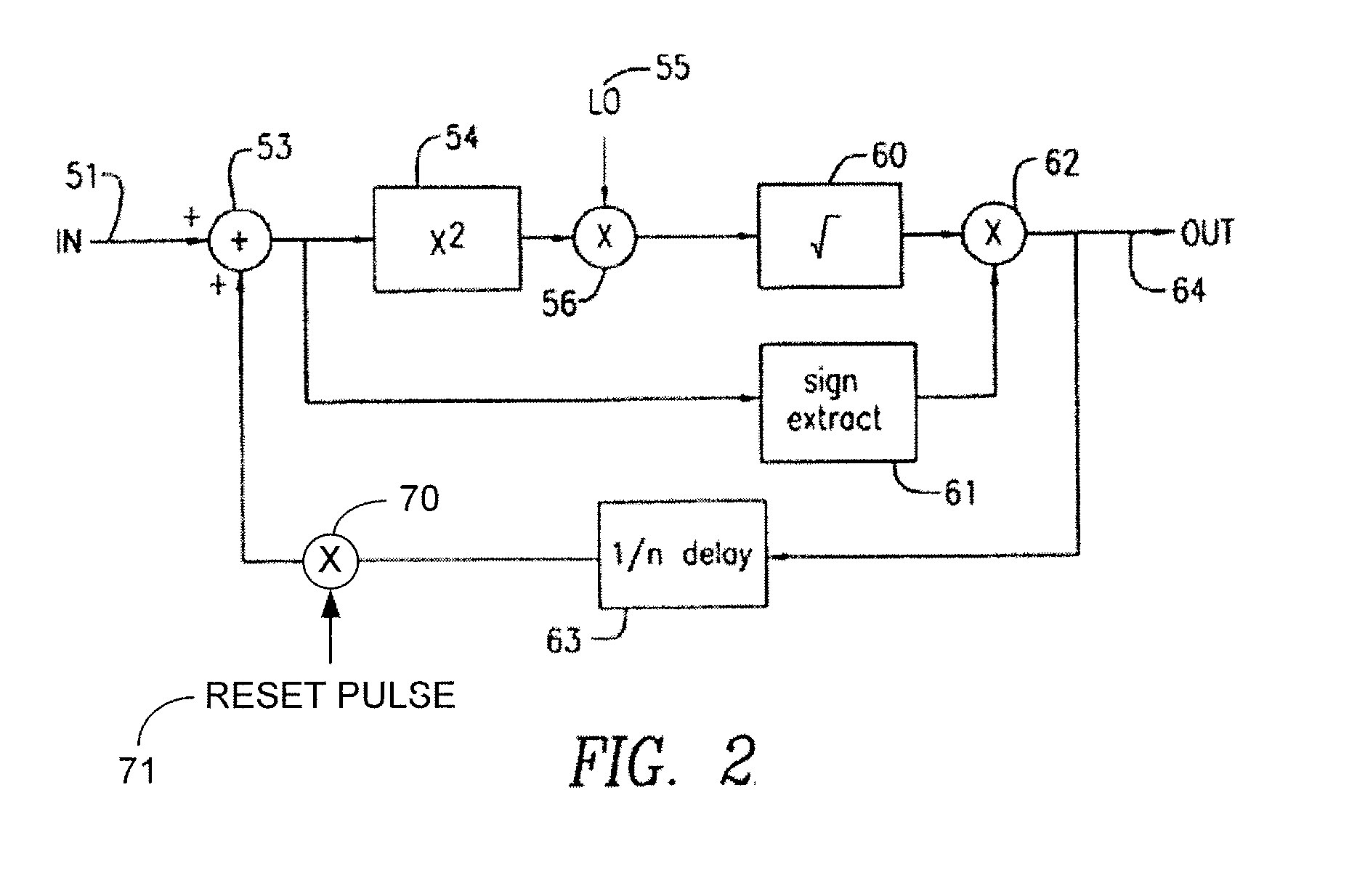Method and apparatus for increasing the channel capacity of a bandwidth limited communications path
a communication path and channel capacity technology, applied in the direction of line-faulst/interference reduction, amplitude demodulation, pulse manipulation, etc., can solve the problem of finite limit of information that could be transferred by a signal of a bounded power, inability to support the required bandwidth, and inability to increase etc. problem, to achieve the effect of increasing the channel capacity of a bandwidth limited communication highway, suppressing inter-
- Summary
- Abstract
- Description
- Claims
- Application Information
AI Technical Summary
Benefits of technology
Problems solved by technology
Method used
Image
Examples
Embodiment Construction
[0034]Referring now to FIG. 1 there is shown an overall system block diagram of the transmit and receive portions of the present invention. The system shown in FIG. 1 is a significant improvement to, and provides operational advantages over the communications systems described in U.S. Pat. Nos. 5,956,372, 6,075,817 and 7,336,747, the teachings of all three patents being incorporated herein by reference. Those improvements and operational advantages will be explained below.
[0035]As shown in FIG. 1 the transmitter section 30 of the present invention has multiple inputs, shown as inputs txbit (1,0) through txbit (7, 6) applied respectfully to the inputs of multiplier circuits 10-13.
[0036]In this exemplary embodiment an 8-bit input is split into four 2-bit words. Each 2-bit word is fed into its respective transmitter channel. There is no priori requirement for coding (for example randomizing, etc.) or arrangement of the 8-bit word before it is applied to multipliers 10-13, nor is there ...
PUM
 Login to View More
Login to View More Abstract
Description
Claims
Application Information
 Login to View More
Login to View More - R&D
- Intellectual Property
- Life Sciences
- Materials
- Tech Scout
- Unparalleled Data Quality
- Higher Quality Content
- 60% Fewer Hallucinations
Browse by: Latest US Patents, China's latest patents, Technical Efficacy Thesaurus, Application Domain, Technology Topic, Popular Technical Reports.
© 2025 PatSnap. All rights reserved.Legal|Privacy policy|Modern Slavery Act Transparency Statement|Sitemap|About US| Contact US: help@patsnap.com



